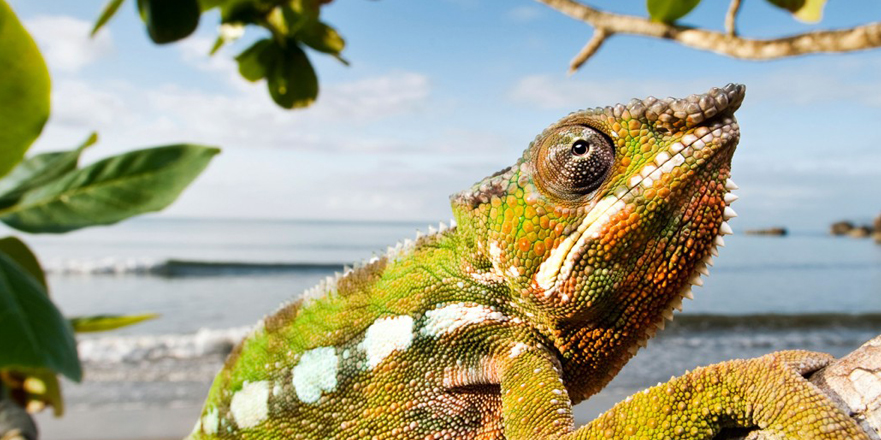Madagascar

Madagascar the throne of diversity
Madagascar is known around the world as a biodiversity hotspot with a rainbow of endemic fauna and flora, most of which are preserved and safekept in reserves around the entire island. The rich landscapes of the world’s fourth biggest island are must see! Just as unique is the geographical formations that seem almost alien. But something that is always overlooked about this wonderful island is the history and culture where a multitude of them mingle beautifully together fusing to give us The Red Island.
The flora is vast and wide coming in so many forms, and none fits this description better than the Baobab tree. Morondava is where you can witness its beauty at the Avenue of Baobabs. You may have seen photographs of gorgeous sunsets with the bulbous trees silhouette in the foreground. But if you want more breathtaking locations, Isalo National Park is the place for you with natural pools and elevations while the Tsingy Bemaraha National Park offers a jagged topography that you will not see anywhere else.
The nickname of the island “Great Red Island” comes from one of its more distinct features, its one-of-a-kind red earth this being only one aspect as Madagascar has a very varied topography, with rivers, deserts, and grasslands dispersed throughout, high plateaus and mountains in the center, and beaches and lagoons along the coast. There is no better way of exploring this vast landscape than by hiking in locations such as the Waterfall of Nymphs, which offers the opportunity to trek up to 3.7 km (2.3 miles), or a walk through the Sacred Hills Trek for those willing to go on a real adventure with 178 km (110.604 miles) to explore.
Cultures have all left their marks on the island. With monuments such as Ambo Himanga, which was constructed by the Melina ethnic group; the building is rich in history and rooted to the people of Madagascar. The culture is far and wide with events mixing the African roots of the people with the European, southeast Asian and Oceanian culture, coupled with the unique resources of the island offers an amalgam of foods and events such as Alahamadi which can be celebrated at the end of February or the beginning of March. It is a well-known festival where the music never stops and people fill the streets to celebrate. Curious about other celebrations? Visiting Madagascar will surely help you satiate this curiosity.
Become eco friends with the island
Madagascar is a cradle of biodiversity. Animals unique to the island and differing from one another even if they are the same species. They are one of the main reasons most people pay a visit to the island and they are the treasure of Madagascar. But do you know where to find the wonderful and beautiful creatures?
Most of them are kept in the reserves that dot the island with roughly 48 recorded. The ecosystem of the island is very important for their people and as a result they have found a way to protect them as well as help their own island to grow economically. So explore the multitude of reserves around the island such as the Lemur island located on the edge of the Andasibe Mantadia National Park where you will discover lemurs you did not know existed until then. But lemurs are not the only animals that are unique on the island so Tsarasaotra park should sate your need for exotic and unique birds while Reserve Peyrieras Madagascar Exotic will offer a wide array of reptiles for you to marvel at.
Safety Advice
1. Respect the culture and traditions (Such as Fady which prohibits the entrance to certain locations and prohibiting to eat certain foods)
2. Practice photo etiquettes
3. Hold onto your belongings
4. Don’t Visit Remote Areas Without a Tour Guide
5. Respect the locals

